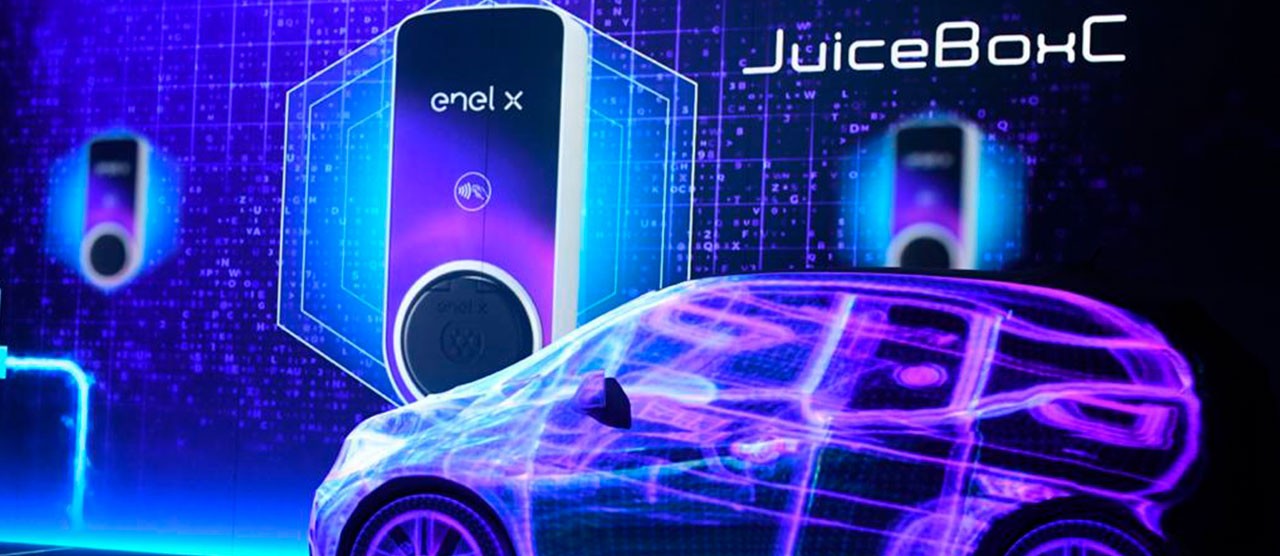“Today, around 900 electric cars are circulating in Chile, and we estimate that by 2030 this figure will reach 80 thousand vehicles. Between 2018 and 2019 alone, the number of electric cars increased by 68%.”
The Japanese company Nissan is one of the companies that bet on electricity. Last year, it celebrated the more than 400,000 kilometers traveled in one year by the Nissan LEAF fleet -the world's best-selling electric vehicle. The vehicle was created in collaboration with its partner Enel X, a company specializing in cargo infrastructure. It also managed the alliance that introduced the first fleet of electric buses to public transportation in Santiago. Those kilometers are equivalent to 10 laps around the world, more distance than between the earth and moon, and saving 70 tons of CO2, equivalent to 2.4 times the carbon dioxide absorbed by all the forests in Chile in one day.
-The cities of the future must find a balance between economic competitiveness, social cohesion, and environmental sustainability. Today there is a greater conviction that the approaching mobility will be increasingly electric, connected, autonomous, and shared," says Amech's president.
“Currently, there are 455 electric buses in Santiago, a figure that places Chile as the second country globally, after China, with more buses of this technology in its public transport. Also, it is estimated that by 2040 100% of public transport will be electric.”
One of the main challenges for this type of car is the load. Currently, in Chile, there are 149 loading points. Therefore, Enel X announced the construction of the first "Electro-route" in the country, consisting of 1,200 loading stations in the next five years, from Arica to Punta Arenas.
Not everything in the world of electromobility is synonymous with electric cars.
Plugged in
Scooters and unicycles have been around for decades. However, in addition to surviving time, these vehicles have been modernized, changed, and evolved. They have even become a form of sustainable mobility.
They are a kind of urban "tribe"—some ride on one wheel, others on two. The emergence of Personal Mobility Vehicles (PMV) is seen every day in cities. It is not strange to see people on top of unicycles riding on the sidewalks or bicycle paths used by electric bicycles or scooters moving on the streets, between cars and buses. They offer lightness, the agility of maneuvering, affordable prices, the potential for fun, and an ecological component: they do not pollute or make noise.
Moreover, sometimes a single wheel is enough.
Before having his first unicycle, Luis Urzúa Arenas -33 years old, a computer engineer- walked for half an hour to get to his job. Riding public transportation was not an attractive option and being cramped in the subway was even less so. In 2018 he started looking for alternatives. Although he first thought of an electric scooter, in his search, he came across unicycles.
-The main reason I decided to get an electric unicycle was its simplicity and practicality, -Luis explains.
Do you want to move forward? Forward the body. Do you want to stop? Stand up straight or put one foot on the ground.
A day at the office of this computer engineer starts at 10 to 9 in the morning. At that time, he gets on his unicycle and starts to ride the streets. If he runs all the red lights, he arrives at work in 10 minutes; if not, he takes just 5 minutes.
-The great virtue is that the unicycle can be charged at home or the office, only by plugging it into the wall. It is practical; you do not have to go looking for parking. There is also the issue that because it is electric, you pollute less in every way. Less noise, less CO2 to the environment, thermal pollution, etc. It's much more efficient for transportation," says Luis.
The advantage is ecological and economical.
According to this engineer's experience, it all depends on the vehicle's cost, but it is convenient. If you go to work in the subway every day, he says, it is 37 thousand pesos a month.
A year, almost 450 thousand pesos, which is what a mid-range unicycle cost.
Is it boring? The unicycle is also synonymous with recreation. In the afternoon, after work, Luis uses it to go for a ride, for example, to Bicentennial Park. He even records his trips on "the wheel," then edits them and even includes music.
-It is an alternative to move around and to entertain yourself -he concludes.
Beyond home automation: living "smart"
There is virtually nothing that technology has not been able to change over the past few years. Moreover, building construction has been no exception. The transformations are revolutionary, so were born the so-called "Smart Buildings."
What are they? Buildings that come integrated with systems to manage energy efficiency, air conditioning, security, lighting, etc. Another of the main requirements of this type of construction is that they are sustainable. That is to say; they reduce their levels of pollution and energy consumption by resorting to alternative energies.
For example, in Chile, the real estate company Cidepa has carried out projects of this type in Macul, San Miguel, and La Cisterna.
As a real estate company, Cidepa has the social responsibility to reduce CO2 emissions; its primary objective translates into a notorious improvement in the owners' comfort, energy savings, and economy in everyday expenses. The city is all of us - explains Benjamín Cillero, Cidepa's general manager.
And, what are the benefits for construction and real estate companies in developing this type of project? First, the constructions are made by studying the building's best orientation for energy saving, and the medium-term profitability of the initial investment is higher. And there are more advantages, so says Cillero:
-In addition to contributing to lower carbon emissions, we would activate the economy that uses renewable energies such as solar. The economic advantages obtained by using heat accumulators for heating and thermal panels, achieving a lower heat loss in winter and a more balanced temperature in summer, and less noise pollution associated with the use of these windows.
One of Cidepa's projects along these lines is the Luis Valenzuela building in Macul, a home automation system. Even in the parking sector, it has a charging totem for electric vehicles. And, of course, it takes advantage of sunlight through panels.
-The main thing is that the energy used in the building is immaculate. Also, there are savings for the community," says Hector Moncada, owner of one apartment in this building. You can also control different appliances, remote monitoring, and access to the apartment—everything through the cell phone.
Sebastián Reinares summarizes how energy has changed the way we live:
-At the end of the day, smart buildings, electromobility, and this series of gadgets that home automation gives you are to dedicate your life to the essential.
Like resting, that is why around 11 pm, Sebastian, using only his voice, indicates that the time has come.
-Good night," he says.
Immediately, all the devices in the house are turned off. The lights, too. Moreover, relaxing sounds begin to be heard, this time from the jungle.
It is time to sleep.


